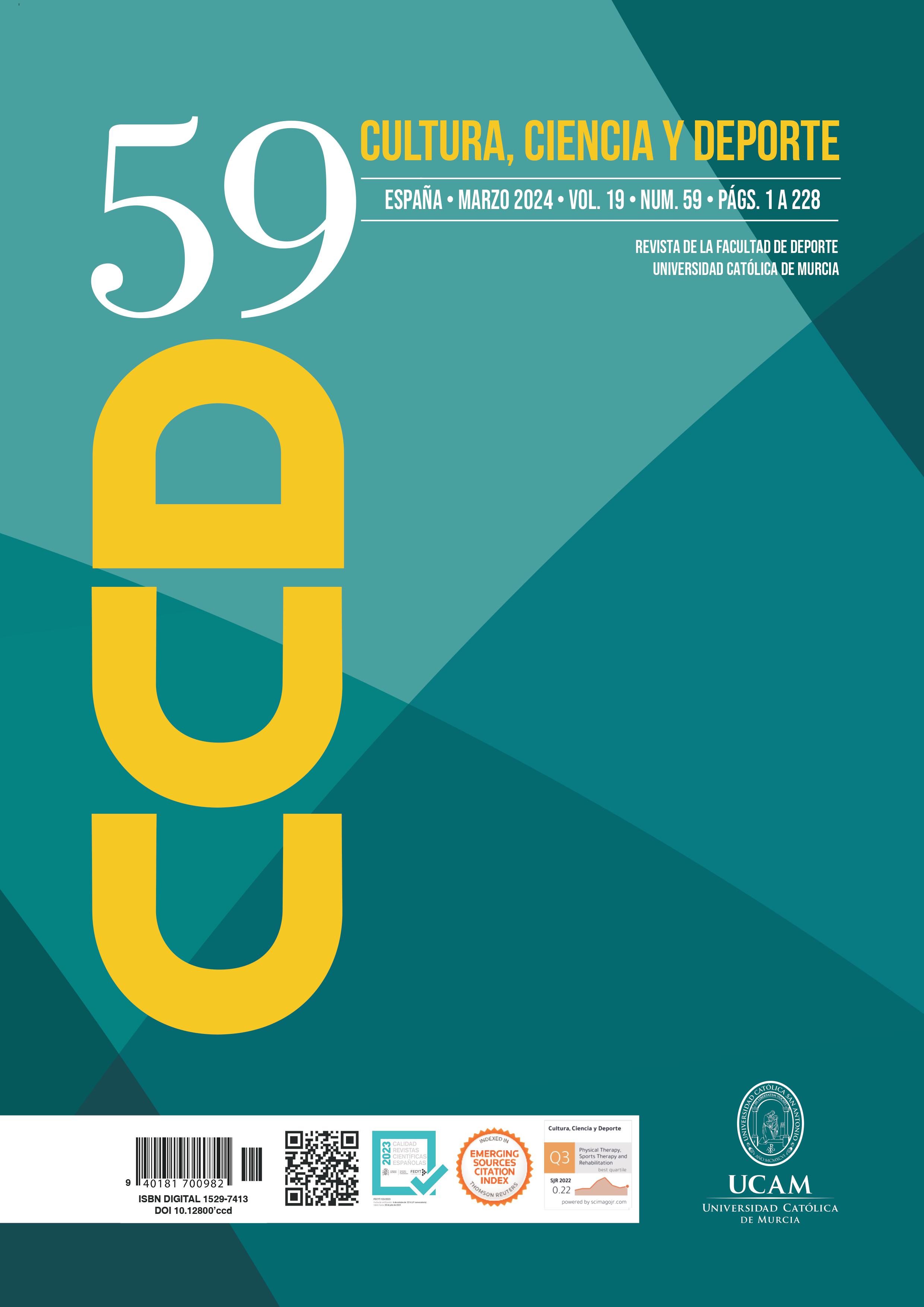Biomechanical differences between hip thrust and glute bridge for hip extensors
DOI:
https://doi.org/10.12800/ccd.v19i59.2084Resumen
The aim of this study was to compare the biomechanical characteristics of two similar exercises used to strengthen
hip extensors: the Hip Thrust and the Glute Bridge. Ten resistance-trained participants were recruited
and performed three repetitions of each exercise in a randomized order at 80% of their one repetition maximum
of the Hip Thrust. Kinematic and kinetic variables were assessed. Significant differences were found between
the Hip Thrust and Glute Bridge for the concentric phase in time (0.8 ± 0.14 s vs. 0.58 ± 0.07 s; p < .002), vertical
displacement (35.65 ± 3.4 cm vs. 15.45 ± 4.82 cm; p < .002), total displacement (39.36 ± 4.03 cm vs. 19.22 ± 5.63 cm;
p<.002), displacement vector magnitude (36.68 ± 3.51 cm vs. 17.84 ± 5.42 cm; p < .002), displacement vector angle
(102.18 ± 6.32 deg vs. 61.79 ± 11.08 deg; p < .002), vertical positive impulse (1315.28 ± 300.34 Ns vs. 940.65 ± 93.59 Ns;
p < .002), and total impulse (1422.11 ± 321.59 Ns vs. 1024.02 ± 105.48 Ns; p < .002). All effect sizes ranged between 1.59
and 4.64. These results suggest that the Hip Thrust is better suited for sports that require the application of strength
from smaller hip angles or higher ranges of motion, and the Glute Bridge allows a higher force application close to
the hip lockout. However, due to the training experience of our sample, these results should only be extrapolated to
resistance trained males.
Descargas
Publicado
Cómo citar
Número
Sección
Licencia
Derechos de autor 2024 Creative Commons Attribution License

Esta obra está bajo una licencia internacional Creative Commons Atribución-NoComercial-CompartirIgual 4.0.
Los autores que publican en esta revista están de acuerdo con los siguientes términos:- Los autores conservan los derechos de autor y garantizan a la revista el derecho de ser la primera publicación del trabajo al igual que licenciado bajo una Creative Commons Attribution License que permite a otros compartir el trabajo con un reconocimiento de la autoría del trabajo y la publicación inicial en esta revista.













